Since 2023, Cristiano Leone has embarked on a significant collaboration with both Hermès International and Hermès Italia. For the former, in September 2023 he curated the exhibition “Le Regard” at the Musée Émile Hermès.
For the latter, he developed the concept “L’Ora Arancio” which featured a series of protean artistic interventions (a series of “daily rituals,” musical performances and Urban Dance, as well as an exhibition by artist Tommaso Spazzini Villa).
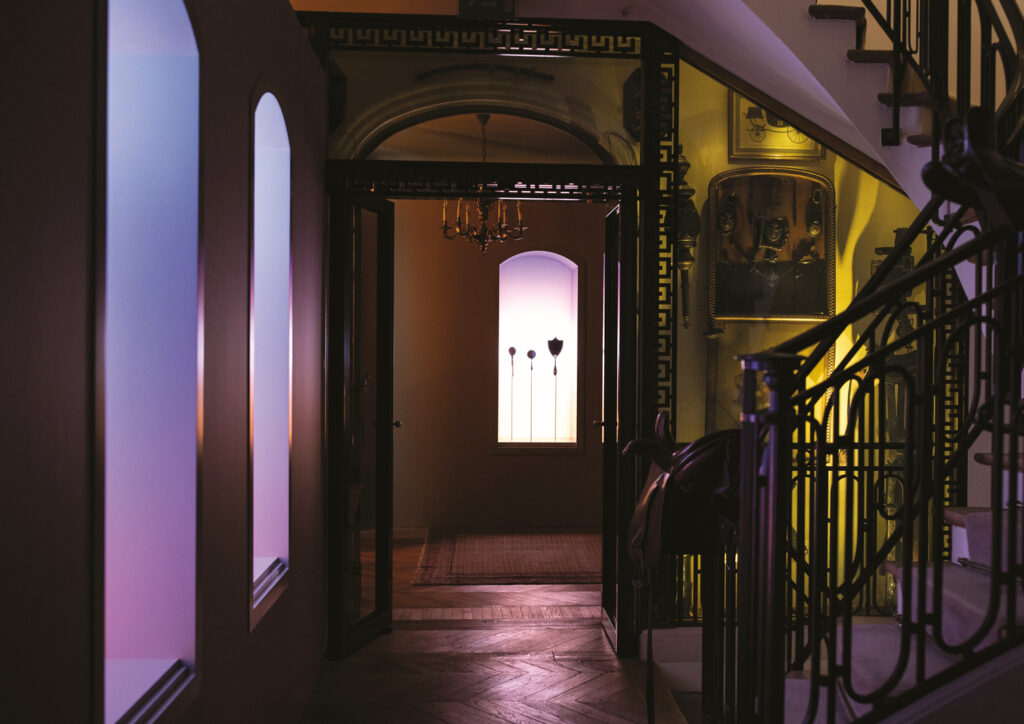
Curated by Cristiano Leone
The essence of the gaze oscillates between impression, perception, and image. It reveals and transforms depending on the light it depends on. In turn, the gaze observes, enchants, and deceives. And it is itself observed, seduced, and deceived.
The gaze is the bridge between tradition and innovation. The Émile Hermès Museum, an imaginative custodian of the house’s tangible and intangible heritage, reveals itself through an interactive journey of lights and contrasts, where past and present intertwine.
The first room takes us back in time to nighttime: we are on Rue de la Paix. In the foreground, a carriage parades down the street. Behind it, a crowd of elegant passersby: some gaze at the shop windows, others nod in greeting. Rue de la Paix, already known in the 19th century as the “bazaar of the most splendid and delicate comfort” (Roland Dorgelès), is now silent.
This street is both a station, a starting or finishing point, a place where human beings cross paths. Do they perhaps know each other? In which direction are they going? Are they about to start an evening, or are they going home? Is the party starting, or does the melancholy of return reign?
The amber atmosphere, the lanterns, and the painting from the collection that lights up, however, have an evocative power that takes us into a labyrinth of literary inspirations. It seems we hear voices: “The deafening street around me shouted,” as Baudelaire wrote, transporting us “Elsewhere, far from here!”
Indeed, one of the abilities of the gaze is to activate unconscious pathways between the senses, memories, images, sounds, and tactile sensations we have not only seen but also heard or touched. Through the gaze, times suggest themselves, mingle, and invite us to explore our inner life, in a surge that imbues the past with modernity and classicizes the present.
The scenography precisely highlights this magical mechanism by which the contemporary values the past, which in turn inspires the present (etymologically, in the sense of ‘blowing into,’ ‘infusing’).
Visitors are about to begin their journey through the gaze. Travel necessities are therefore offered to them. Exquisite specimens of silversmithing and glass art, they are simultaneously a magnificent container and a myriad of useful and aestheticizing objects. One of them contains an “eye bath.” Each person is thus invited to clear their vision, to purify their gaze from distractions, from the flow of visual stimuli of our everyday life. Our starting and ending point is the eye, since “The eye… The whole universe is in it, since it sees, since it reflects” (Guy de Maupassant).
The pages of time begin to mix, as suggested by the contemporary glassworks of Philippe Dumas. The glass not only illuminates the corridor’s path but also certain paintings from the collection.
Light reveals and deceives. It is through light that our physical characteristics and those of everything around us are revealed to our perception. But light is also a material of deception. The history of art shows us that all forms of artistic language are continually confronted with the use of light: how to imitate it, capture it, tame it, exploit it, and, through it, manipulate reality.
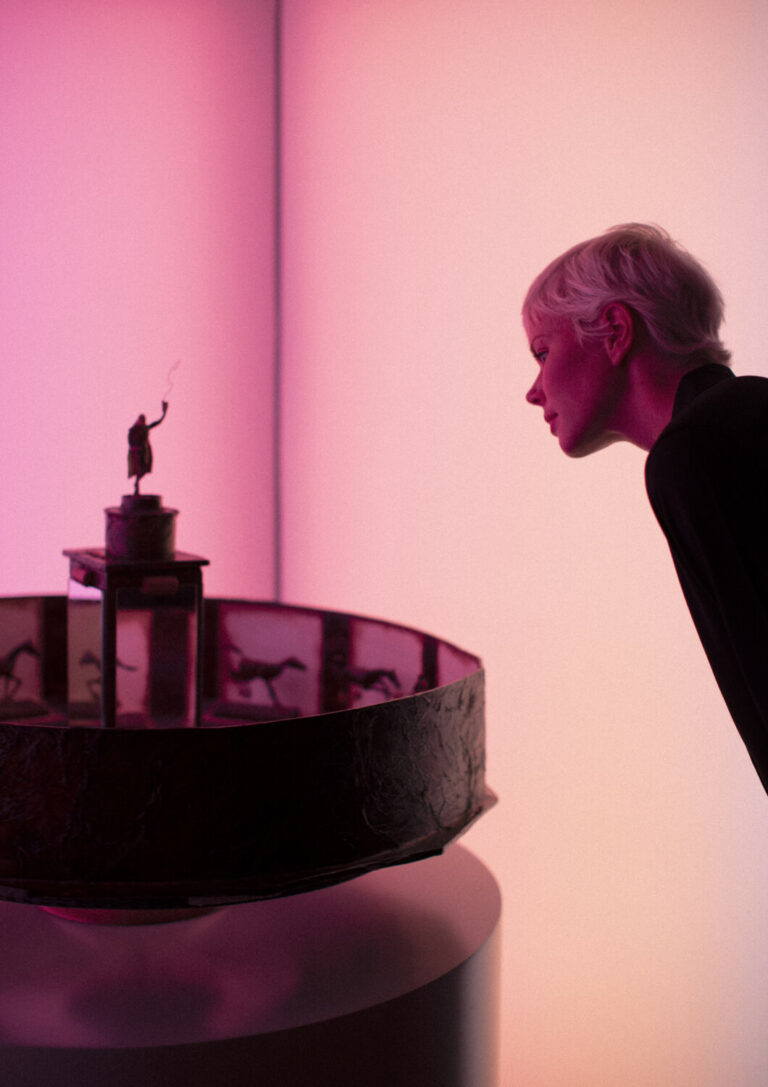
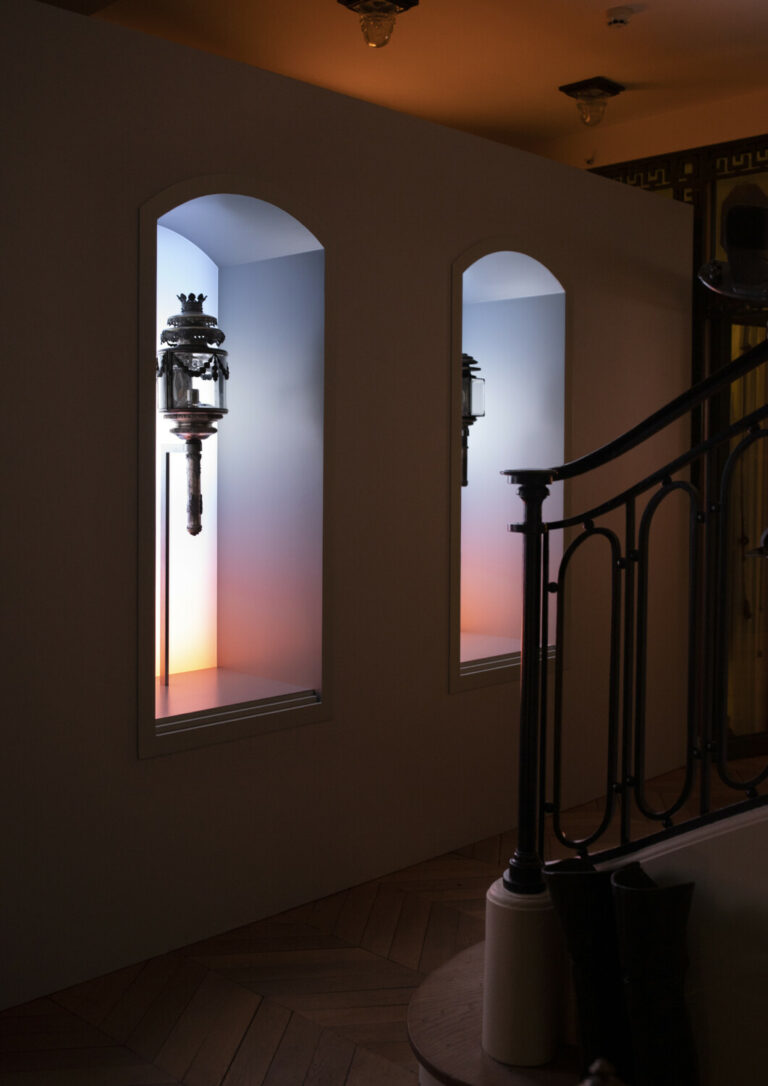
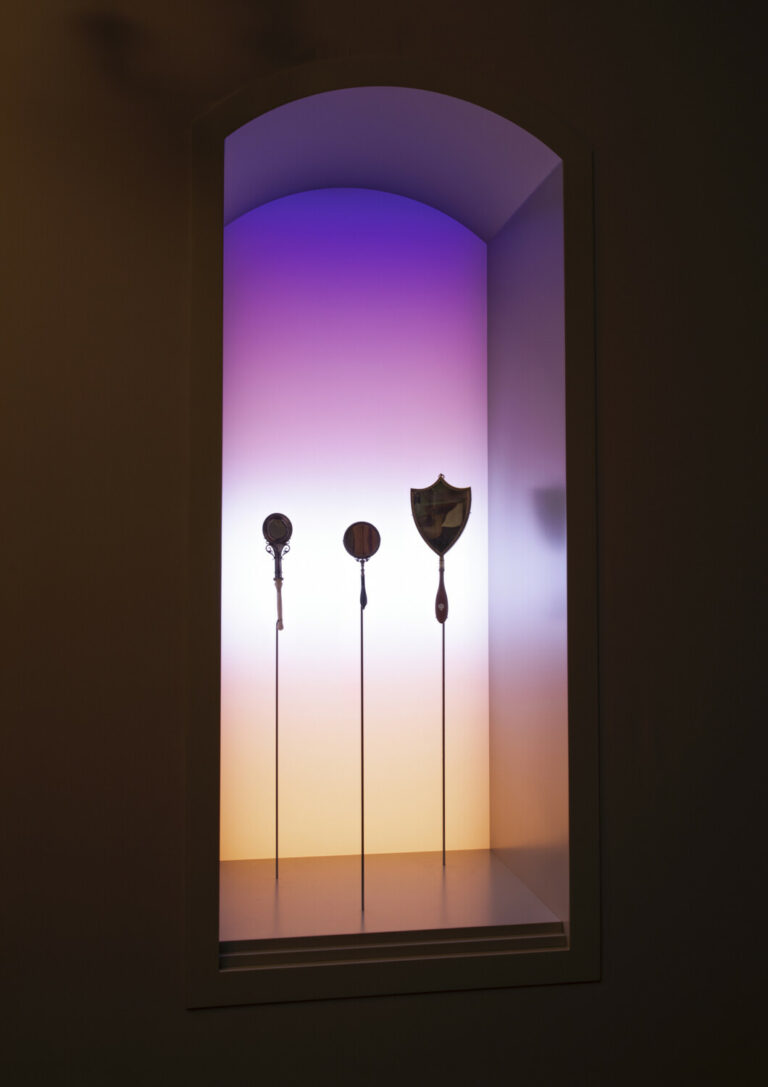

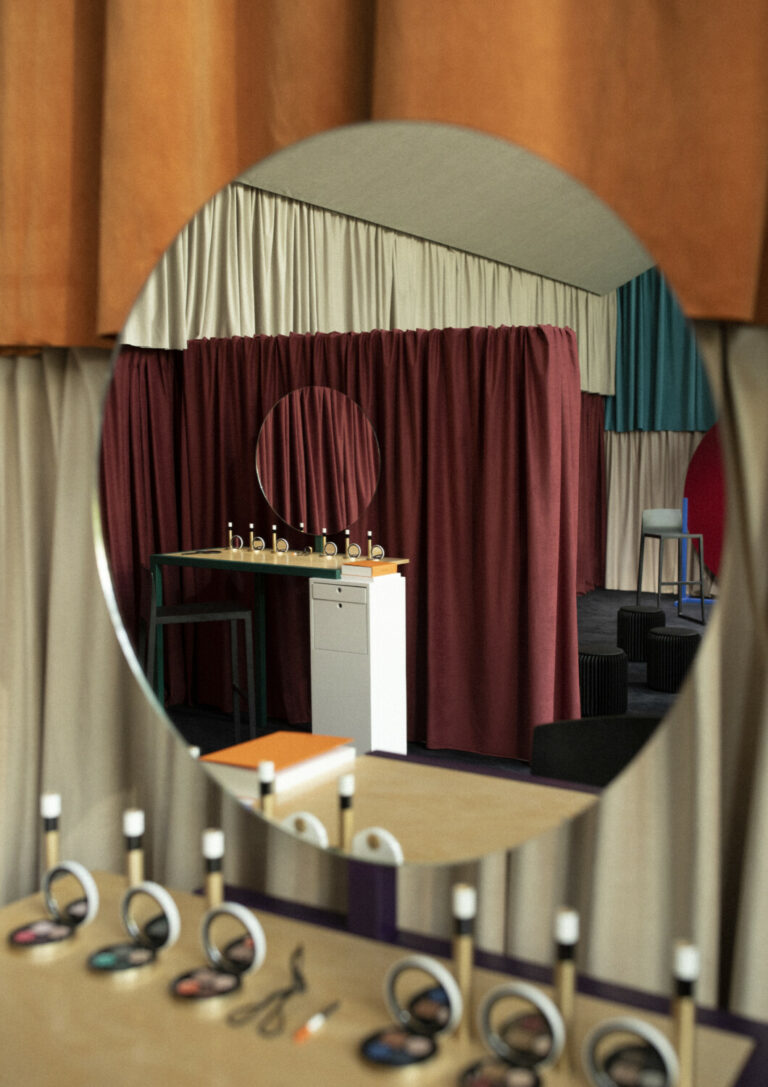
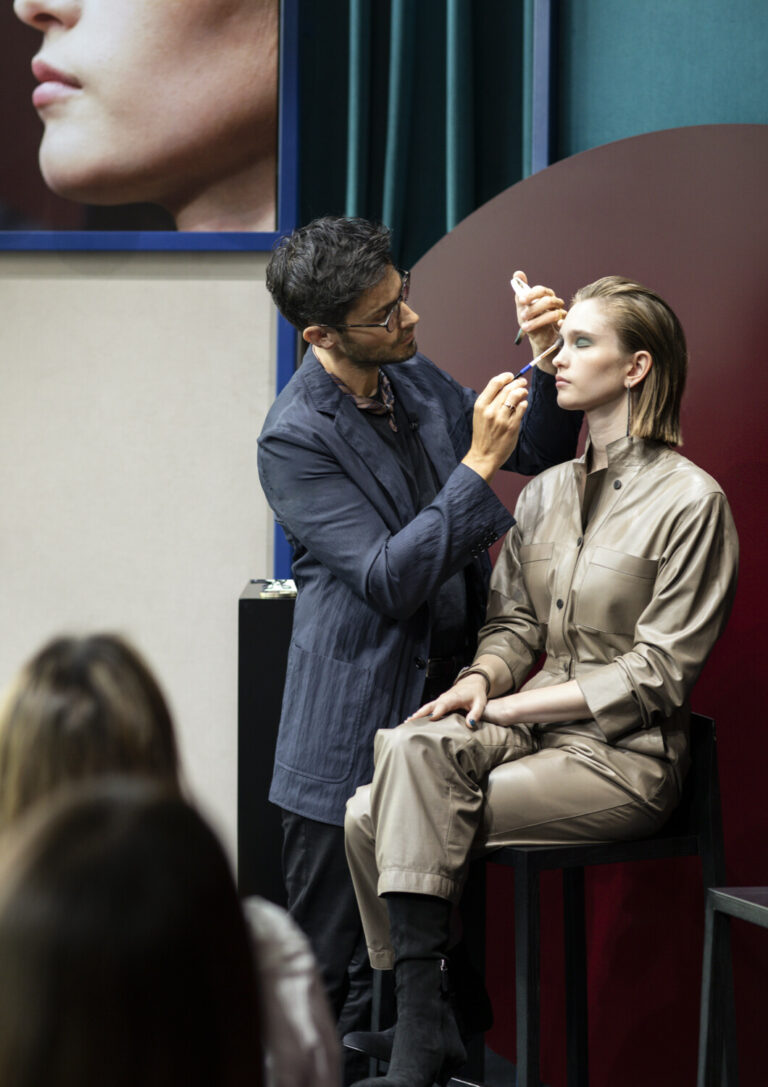
The apparent contrast between the light that unveils a certain truth to the eye and the one that leads astray is fully manifested in the very concept of theater. The word “theater,” simultaneously a place of performance and a genre related to literary fiction, comes from the Greek theáomai, which means ‘to look,’ ‘to open oneself to the gaze.’
It is in this logic that optical theaters are displayed, illusionist devices that weave a link between theater, painting, photography, and cinema. Some optical boxes show, with irony, the glories of opera and the quarrels of maids chasing cats in kitchens. A box represents a bridge under the Thames: you can see silhouettes of passersby and carriages. The two-dimensionality seems to animate, and these silhouettes move, albeit very slowly. Would those who made it at the time have ever imagined that cinema would whisk cars through tunnels, or even that a real tunnel would be dug under the Channel?
A moving carousel shows us a horse jumping an obstacle and leads us into another space, where the visitor is more immersed in the illusion. A magic lantern, the ancestor of the cinematograph and thus of cinema, an object whose origin dates back for some to an Arab scholar of the 11th century, or for others to ancient Greece, manifests its thaumaturgic power: that of performing wonders, of externalizing illusions. The animals it projects on the wall transport us into the universe of fairy tales and fables, such as those by La Fontaine or a contemporary comic strip.
Anamorphoses now follow. Unintelligible traits find their completed form as soon as they are observed, through a cylindrical reflective surface, from a precise perspective. Each form thus contains multiple forms. They vary according to the point of observation from which the gaze is cast. The entire external world is indeed more complex than believed, since it multiplies incessantly through all the visions those who observe it have. The gaze is therefore a journey that connects the micro- to the macrocosm. Depending on the lens through which one looks at the world, the great can expand further and the small can reveal dimensions just as vast and unexpected: a transformation miniature is there to remind us of this.
The path then leads to the discovery of an object as intriguing as it is mysterious: a jealousy lorgnette. Those who looked through it gave the impression of looking ahead. But through a play of lenses, the observer could look, without others noticing, in a completely different direction. The visitor thus participates in an optical experience that allows them both to observe the lorgnette in its entirety and to also admire its constituent elements. And if it is true that scent increases jealousy, this lorgnette contains a vial of it!
The visitor finally arrives in the room that constituted the beginning of the journey: the brightness has, however, changed. It is no longer night. What our gaze observes does indeed change with time, and alters with it our perception of space, the objects that compose it, and sometimes ourselves.
We finally arrive at the most emblematic room of the Museum: Émile Hermès’s office. Upon entering this room, we immediately notice the golden light of the objects displayed in the showcases, the stuccos – which we cannot help but imagine shining under the dim light of a candle – as well as the reflective surfaces of the showcases themselves. It feels as if the words of Tanizaki surface: “Just as thin streams of water run over the mats to gather in stagnant pools, rays of light are captured here and there, then spread thin, uncertain and shimmering, weaving on the fabric of the night like a damask made of these gold dust designs.”
And it is to render the sensation of astonishment that these objects take the form of a luminous breath, a fleeting glow that in turn illuminates other objects and the visitors who observe them. In front of them, the contemporary scenography isolates a number of works from the collection all linked to feminine beauty, to its transcendent Goethean ideality, not without a note of irony that accentuates its complexity. The Amazon stirrups refer as much to ladies on horseback as to warrior women. The coquettish umbrella cane eclipses, among sumptuous plumages, the ambiguous figure of a sphinx, a female monster both lion and bird; the lorgnette, the “face à main,” and the glasses, as well as the photograph of the moon and the incredible mirror evoke the duality of the gaze, its sincere nature and its false or dreamlike side.
The aura of Sarah Bernhardt closes the exhibition, as a nod to literature, theater, and cinema, which have subtly accompanied the visitor. The Divina is so divine that she presents herself immense to our eyes, if only through her dog’s collar.
The voice accompanying us is that of an artist poet, Hanne Lippard, who offers us – in turn – her gaze on the Gaze.
From the curatorial note by Cristiano Leone for the exhibition by Tommaso Spazzini Villa:
When a human being is suffused with light, they manifest and become visible to the observer in all their distinctive traits. Light is therefore the origin of being, but above all, of existing among others: it is the engine that ignites the relational process. The same happens with the works of Tommaso Spazzini Villa, which, through artificial light illuminating leaves, bring out very human-like profiles.
With their powerful delicacy, the works suggest that our gaze is not only capable of revealing what exists but can also create new forms and new trembling sensations. “I am a world, you see, these crumpled outlines of a leaf,” Tommaso seems to say to us. Light, gaze, humanity, and beauty.
And so, the iconic line du Regard by Maison Hermès invites us to rediscover the world from new perspectives, in a mutual gaze, in the desire to discern in things the most fleeting essence, the ephemeral that becomes a sign of permanence, and an unforgettable emotion. After all, as de Musset wrote, Tout vrai regard est un désir (Every true gaze is a desire).